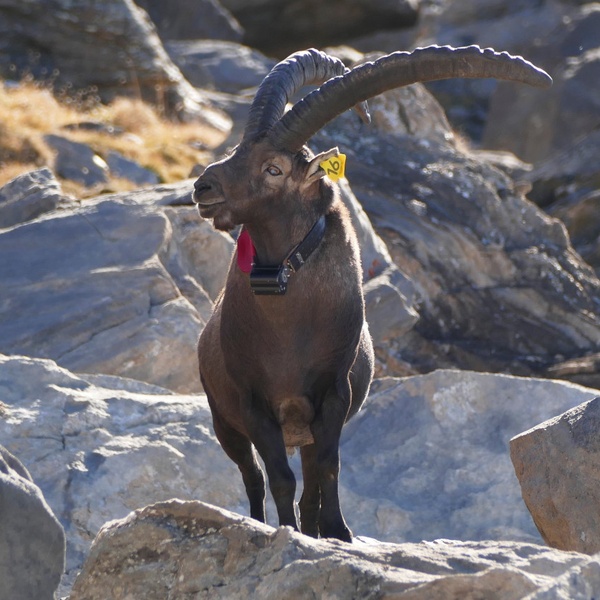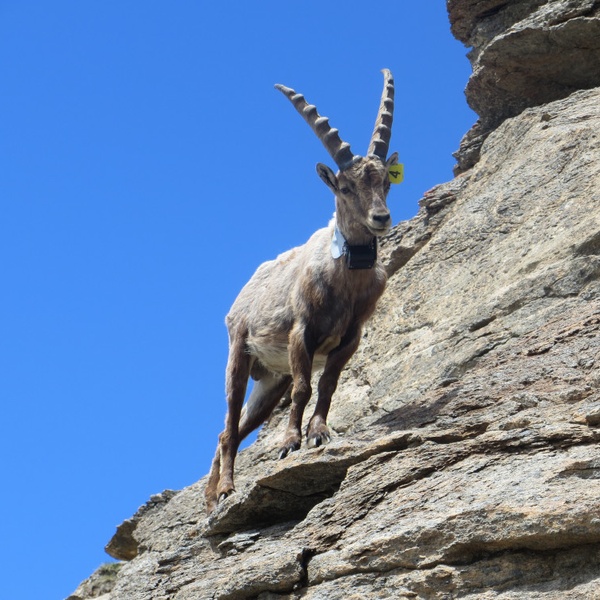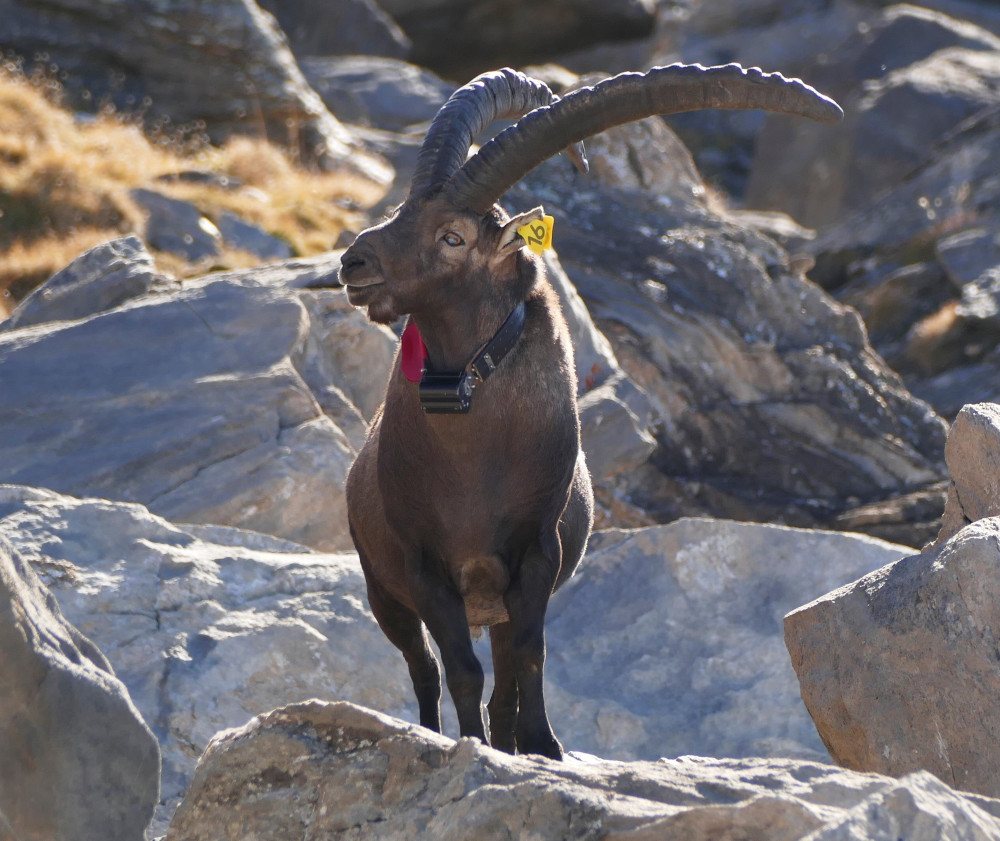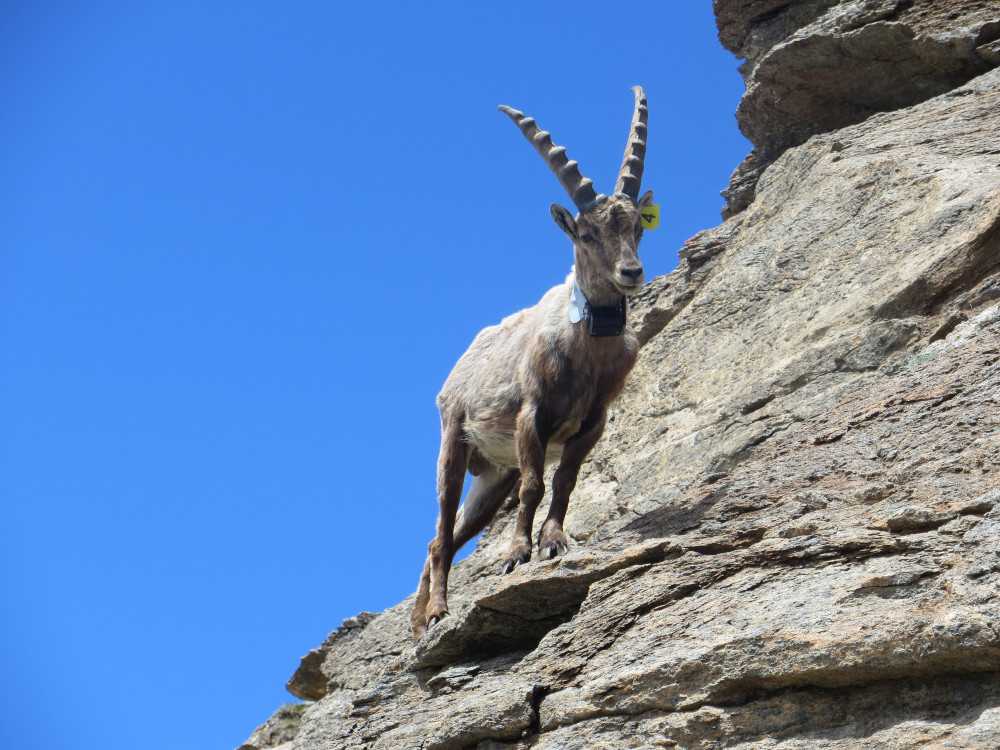The migrations of ibexes and climate change
April 10, 2025At the end of March 2025, an interesting scientific article on the seasonal migratory habits of the ibex in relation to climate change was published in the Journal of Animal Ecology. This is the result of an alpine-level study that cross-references a large amount of data related to the movements of 406 collared ungulates with the climatic conditions of their habitats to analyze how seasonal variations in snow cover, peaks of vegetation growth and senescence, and temperatures influence the strategies and timing with which ibex migrate from wintering sites to the slopes where they spend the summer season, and vice versa. The work also benefited from the collaboration of the Alpi Cozie Protected Areas, which provided data on 16 individuals located in the Orsiera Rocciavré and Val Troncea natural parks and in the ZSC Rocciamelone, where a GPS collar was applied as part of the Alcotra Lemed Ibex project, between 2017 and 2020.
The Study
The ultimate goal of the study is to understand the resilience of the ibex to climate change, a species that has adapted to certain environmental conditions that global warming has begun to significantly alter, to assess whether the ungulate's behavioral habits will allow it to survive the disruptions predicted by future scenarios. The ibex, in fact, undertakes two seasonal migrations (autumn and spring) of a rather short radius, averaging around 3 km and 400 m of elevation gain, which allows it to move from lower, rugged south-facing slopes, where it spends the winter, to higher, cooler slopes rich in forage for the summer. By relating the GPS tracks of the ungulates' movements to data on snow cover and vegetation growth obtained from the analysis of satellite images through the Normalized Difference Vegetation Index (NDVI) and the meteorological conditions at the sites occupied by the wildlife, the study investigated which element is more determinant in initiating migration.
The Results
From the results obtained, it appears that the main factors capable of triggering the spring movement of ibex are primarily the peaks of vegetation growth combined, though less deterministically, with temperatures and the presence of snow on the ground. The dates on which these ungulates undertake transfers largely depend on the availability of forage and its nutrient characteristics: earlier when grass growth is anticipated, and later when seasonal conditions slow its development. There is a clear distinction between males and females because the habits of the latter largely depend on their reproductive calendar, which necessitates reaching summer sites to give birth, regardless of atmospheric, climatic, and vegetation conditions. The autumn migration, however, appears to be more strongly determined by the presence of snow on the ground and is more similar between males and females.
In conclusion, according to the intermediate climate warming scenarios developed by the IPCC, snowmelt on the ground will occur on average 10 days earlier by 2050 and 13 days earlier by 2100. This means that even the ibex will need to anticipate the spring migration period to reach summer sites during the period of maximum forage availability. From the research results, it seems that male ibex are better equipped to adapt to these changes, while females may experience a lower reproductive success by reaching birthing sites late in the season when the nutritional properties of the grass will be declining.
For more information, please refer to the article (in English).
You might also be interested in...
- campaign Climate change is pushing birds higher.
- campaign Monitorare gli ortotteri: una sperimentazione nei Parchi Alpi Cozie
- tactic LEMED-IBEX
- campaign The Anthocharis euphenoides beyond yellow
- shopping_cart Lo Stambecco in Val Troncea e Val Germanasca
- shopping_cart Il ritorno dello Stambecco in val Chisone e val Troncea
- shopping_cart Boschi, Stato, comunità e fortificazioni. - Storie di gestione territoriale, usi, abusi e furberie nell'alta val Chisone dal XVII al XIX secolo.
- shopping_cart Biologia e conservazione degli ungulati alpini
- shopping_cart Dal fondovalle alle più alte rupi
- tactic Alcotra BiodivTourAlps
 Research
Research



